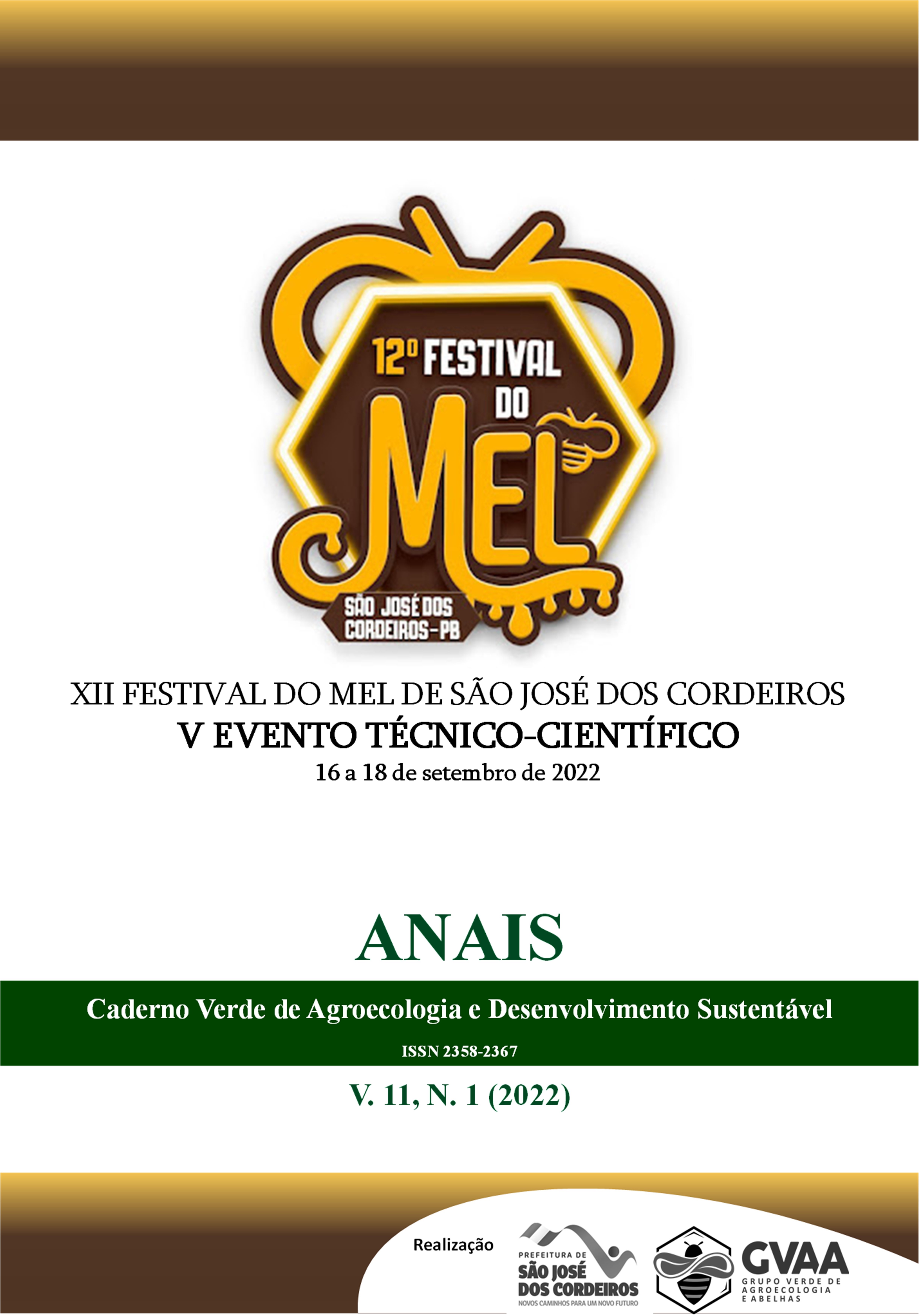Elaboração e caracterização físico-química e microbiológica de geleia de physalis (Physalis peruviana) com adição de mel
Palavras-chave:
Physalis peruviana, Geleia, melResumo
O cultivo das pequenas frutas gera uma facilidade para produção de doces, polpas e geleias para indústrias. Se tratando do physalis, é uma fruta de fácil cultivo, um custo financeiro baixo, além de ser rica nutricionalmente em vitaminas (A e C), fósforo, ferro, e compostos bioativos como carotenoides e compostos fenólicos. Foram elaboradas três formulações, geleia comum F1 (40% physalis, 60% açúcar), geleia extra F2 (50% physalis, 50% mel) e geleia Premium (60% physalis, 40% mel), que foram submetidas a análise físico-química e microbiológica realizadas nos laboratórios do Centro Vocacional Tecnológico (CVT), Pombal – PB. As análises físico-químicas foram realizadas em triplicata. Para pH, os valores variaram de 3,4 a 3,5, para acidez obteve-se médias máxima e mínima correspondendo a 0,31 (F1) e 0,52 (F3), estando todos entre a acidez recomendada que é de 0,5 a 0,8 para evitar que a sinérese ocorra durante o armazenamento da geleia. Em relação a umidade os valores encontrados estão entre 25,39 e 27,04, para o teor de vitamina C, todos os tratamentos apresentaram uma baixa quantidade, variando de 2,13 a 2,25mg/100g, outro teor avaliado foi de Sólidos Solúveis Totais ou (°Brix), que variou de 63,5 até 66,4, respeitando a quantidade mínima de SST em ° Brix recomendada que é de no mínimo 62,0, já o os teores apresentados para açúcares redutores variaram bastante, com 24,37 para o F1 e 82,98 e 87,47 para F2 e F3 respectivamente, quantidade elevada devido a alta quantidade de açúcares redutores encontrados no mel, por último, os resultados macrobióticos encontraram-se entre os parâmetros da legislação, com resultados negativos para coliformes e salmonella. Assim, a adição de mel em substituição do açúcar na fabricação da geleia agregou sabor e características desejáveis ao produto, além de possíveis benefícios a saúde, sendo uma ótima alternativa para futuros estudos.
Downloads
Publicado
Como Citar
Edição
Seção
Licença
Termo de cessão de direitos autorias
Esta é uma revista de acesso livre, em que, utiliza o termo de cessão seguindo a lei nº 9.610/1998, que altera, atualiza e consolida a legislação sobre direitos autorais no Brasil.
O(s) autor(es) doravante designado(s) CEDENTE, por meio desta, publica a OBRA no Caderno Verde de Agroecologia e Desenvolvimento Sustentável, representada pelo Grupo Verde de Agroecologia e Abelhas (GVAA), estabelecida na Rua Vicente Alves da Silva, 101, Bairro Petrópolis, Cidade de Pombal, Paraíba, Brasil. Caixa Postal 54 CEP 58840-000 doravante designada CESSIONÁRIA, nas condições descritas a seguir:
O CEDENTE declara que é (são) autor(es) e titular(es) da propriedade dos direitos autorais da OBRA submetida.
O CEDENTE declara que a OBRA não infringe direitos autorais e/ou outros direitos de propriedade de terceiros, que a divulgação de imagens (caso as mesmas existam) foi autorizada e que assume integral responsabilidade moral e/ou patrimonial, pelo seu conteúdo, perante terceiros.
O CEDENTE mantêm os direitos autorais e concedem à revista o direito de divulgação da OBRA, com o trabalho simultaneamente licenciado sob a Licença Creative Commons do tipo atribuição CC-BY.
O CEDENTE têm autorização para distribuição não-exclusiva da versão do trabalho publicada nesta revista.
O CEDENTE têm permissão e são estimulados a publicar e distribuir seu trabalho online (ex.: em repositórios institucionais ou na sua página pessoal) a qualquer ponto antes ou durante o processo editorial, já que isso pode gerar alterações produtivas, bem como aumentar o impacto e a citação do trabalho publicado.








